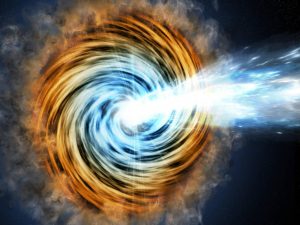30 Doradus B : A Supernova

NASA’s Chandra X-ray Observatory recently captured a stunning image of 30 Doradus B, a supernova remnant that is part of a vibrant region of space where stars have been forming for millions of years.
- The team of astronomers studying the remnant discovered that it could not have been formed by a single supernova. Instead, the researchers believe it was created by at least two.
- A supernova is the explosion of a star whose luminosity after an eruption suddenly increases many millions of times its normal level.
- Supernovas are “the largest explosion that takes place in space.”
- A star can go supernova in one of two ways:
- Type I supernova: Thestar accumulates matter from a nearby neighbour until a runaway nuclear reaction ignites.
- Type II supernova: Thestar runs out of nuclear fuel and collapses under its own gravity.
- Supernovas can briefly outshine entire galaxiesand radiate more energy than our sun will in its entire lifetime.
- They’re also the primary source of heavy elements in the universe.
- They heat up the interstellar medium, distribute heavy elements throughout the Galaxy, and accelerate cosmic rays.
NASA’s Chandra X-ray Observatory:
- It is a telescope specially designed to detect X-ray emission from very hot regions of the Universe, such as exploded stars, clusters of galaxies, and matter around black holes.




